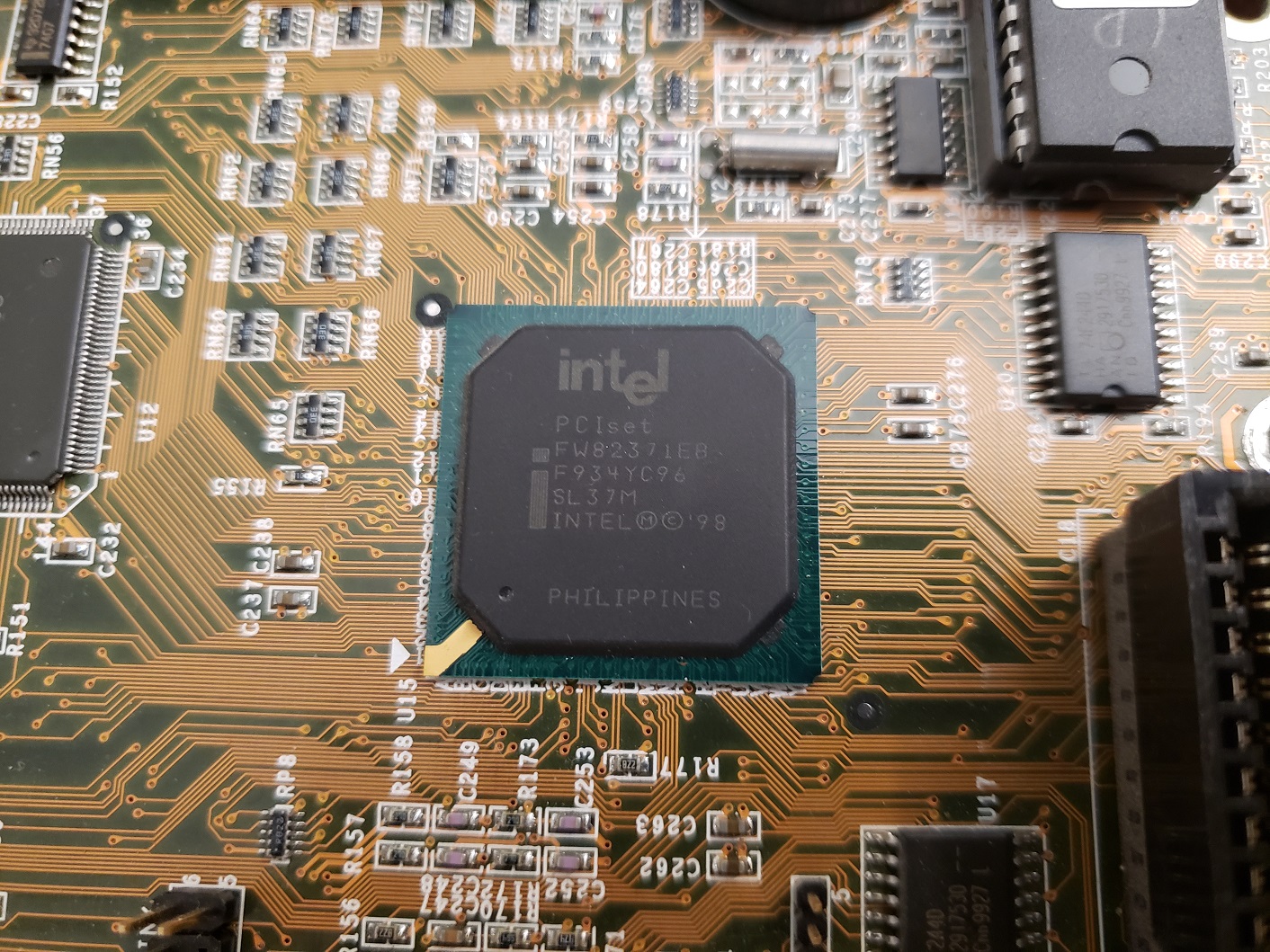
The legendary Abit BP6, released in 1999 was the first dual-processor socket PPGA 370 motherboard and the first board to finally bring multi-processor boards at an affordable price to the consumer market. There were motherboards prior to the BP6 which featured more than one CPU on the board. Slot 1, Pentium Pro and even so far back as the 386 motherboards were available that could support multiple physical CPUs on board in what was known as SMP processing. Generally these setups were found in very high end and very expensive workstations and were more or less out of reach to the average consumer.
In 1998 the Mendocino Celeron CPUs were released which were intended to be Intel’s low cost alternative to the Pentium II and eventually the Pentium III. One interesting thing about these CPU’s was that they were released as SMP (Symmetric Processing) capable meaning that two Mendocino Celerons could be made to theoretically function together on a single motherboard. It doesn’t seem Intel intended consumers to find out about this function but regardless it was discovered and soon Abit decided to take advantage of this fact by releasing the SMP capable Abit BP6. It was soon found that users could, with the right operating system and with certain games that supported SMP get better performance at a lesser price with dual Celerons on the BP6 than with a single more expensive CPU. With that bit of history out of the way let’s take a closer look at the motherboard itself.

The Abit BP6 uses the Intel 440BX chipset and ONLY supports Mendocino Celeron CPUs. Users have had success upgrading to later CPU’s such as Coppermine Pentium IIIs and even reportedly Tualatin Celerons via adaptors such as the Neo s370 Powerleap adapter and various modifications. Only the Mendocino Celerons are confirmed to work in dual processor AKA SMP mode though there are many posts of uses getting later Coppermine and Tualatin CPUs working in these modes as well with adaptors and modifications. The BIOS on the BP6 has quite a bit of overclocking and tweaking features and allows for setting the CPU multiplier and front side bus via BIOS settings. default front side bus for the Mendocino Celerons is 66MHz but the board does allow for settings of 75MHz as well as 100MHz FSB and above via a very user friendly “Soft CPU II” option in BIOS.
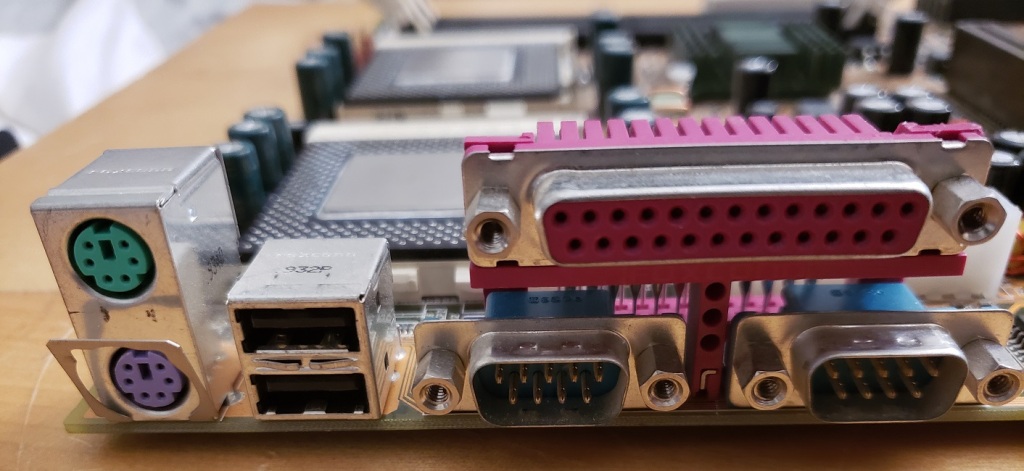
Built in I/O on the board is pretty minimal with dual PS/2 for mouse and keyboard, dual USB 1.1, a parallel and dual serial ports.
1) CPU – The BP6 only officially supports the Mendocino Celeron from speeds of 300MHz up to the fastest released chip of 533MHz (with the newest BIOS version installed). Despite being budget CPUs the Mendocino Celerons were very competitive with Intels higher end Pentium offerings. My board with the latest BIOS update features dual 533MHz Celerons which are very capable of playing most any Win 9x era games as well as early XP games provided you lower some settings. With a decent heatsink and thermal paste it’s not hard to overclock to 600MHz but this is about the maximum you’ll get out of the Mendocino while maintaining any stability.
Be aware this board only functions in SMP (dual CPU) mode with operating systems and software that allow it. Even though operating systems such as MS-DOS and Windows 9x do not support dual processors these systems will happily run on this board in single CPU mode and dual booting OSes is always an option.

2) RAM – The BP6 features three memory sockets for installing up to 768MB of SDRAM of either the PC66 or PC100 variety. PC133 memory will work fine but it will downclock to PC100 speeds. Each slot will also only accept up to 256MB DIMMS with larger sticks only being detected as 256MB.
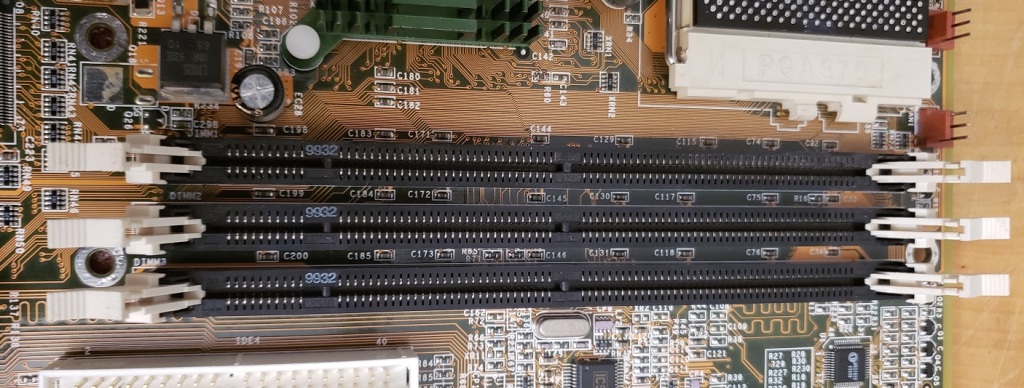
3) AGP – The AGP slot is a x2 slot 3.3v slot. You can safely use anything up to about a Radeon 9700 Pro or Geforce 4 though the AGP x2 is going to bottleneck the power these video cards could potentially provide.
4) Five PCI v2.1 and two 16-bit ISA slots
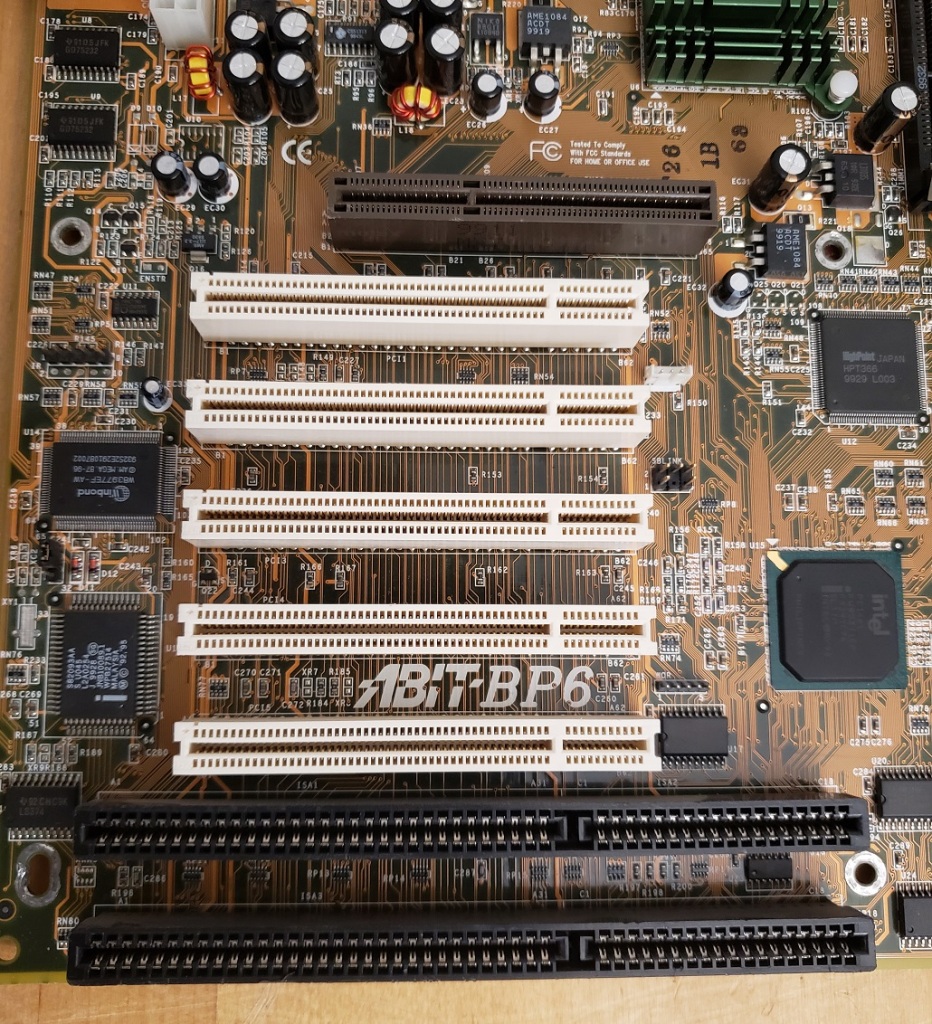
5) Floppy and IDE connectors – One standard floppy connector and two ATA 33 connectors supporting two devices each for a total of four IDE devices.
6) HighPoint HPT366 – This additional controller chip supports four extra IDE devices via the white connectors at ATA 66 speeds, double the speed of the two standard connectors. Together that means the BP6 can support up to eight IDE devices in total.


7) SB Link – The BP6 sports a Sound Blaster link connection. the purpose of this cable was to create better sound compatibility for PCI sound cards when operating in a DOS environment. Unfortunately, the connector is somewhat uncommon on PCI sound cards and Creative themselves only made one card, the AWE64 PCI that even supported the cable. The SB Link connector is made somewhat even more redundant since the board already supports two 16-bit ISA slots.
Now that we’ve taken a look at the motherboard itself let’s take a look at the PC I built around it.

Since the BP6 is kind of a “poor man’s workstation” I decided to go with this server style case. The case itself is quite tall with a 3 digit LED display as well as a panel that slides down to reveal five 5 1/4 drive bays and two 3 1/2 bays.

Here is a look at the rear as well as the side of the case.
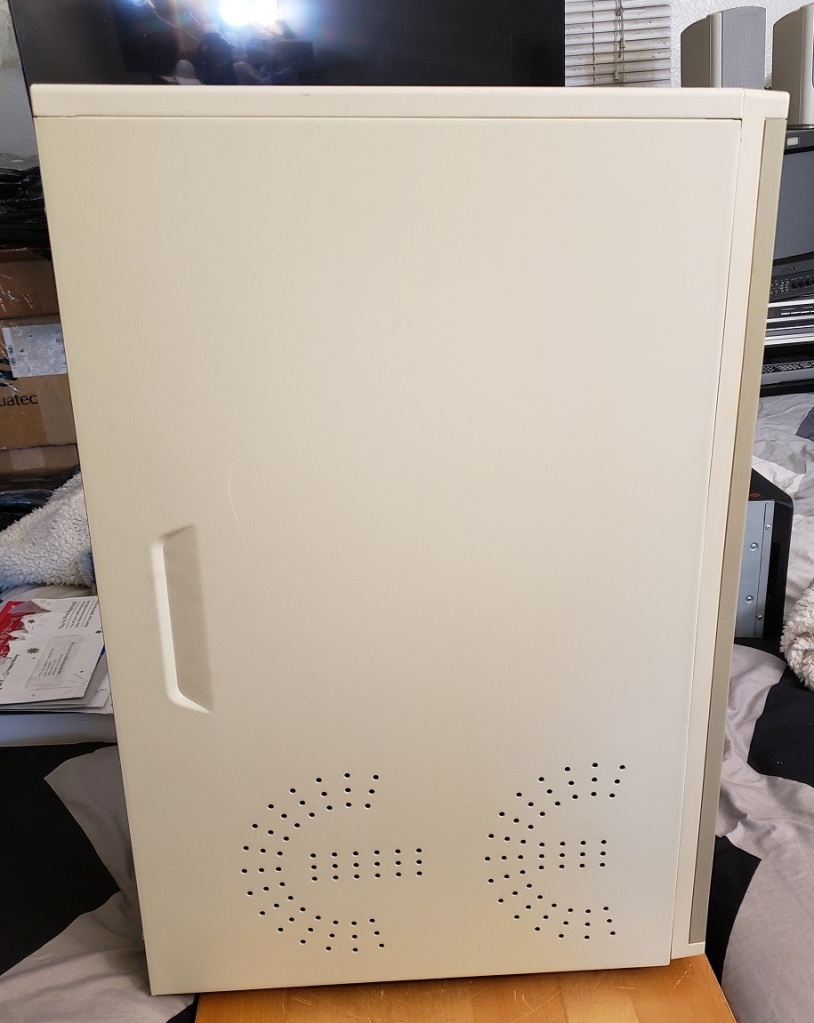

And the three digit LED MHz display.

Here is a look at my Abit BP6 under the hood.
I used some quality thermal paste and cooler master heatsink/fans on my CPU’s as well as attached a small fan to the heatsink on the chipset to help with any overclocking I decided to do. I was able to overclock this particular board to 600MHz by raising my FSB to 75MHz but anything higher resulted in non posting or instability.
I am using the full 768MB of PC100 RAM as well as running the Windows 2000 operating system. Windows 9x does not support SMP processing AKA dual CPUs so my pre W2K OS choices were rather limited, especially if gaming is your priority. I went with W2K over XP simply because it is a bit of a lighter OS compared to XP as far as requirements go and should run a little better on this setup as well as allowing me to play all the games I’m looking to play. Be sure to upgrade to the latest W2K service pack if you go with this OS for your build as some games such as Quake III failed to run for me before updating.
My hard drive selection was a simple 40GB Western Digital IDE drive from around the early 2000’s. nothing spectacular but more than enough for this setup.
Let’s take a quick look at the two expansion cards I have added to this board.

For sound I went with the venerable Sound Blaster Live! although this motherboard does have two 16-bit ISA slots DOS was not the focus of this build since DOS can take not take advantage of the dual CPUs. The SB Live! cards are good all around Windows 9x and early XP cards that support EAX and even have decent DOS support for being PCI cards. I could have gone with a later Audigy card but I felt this was a great card for the time frame I was going with.
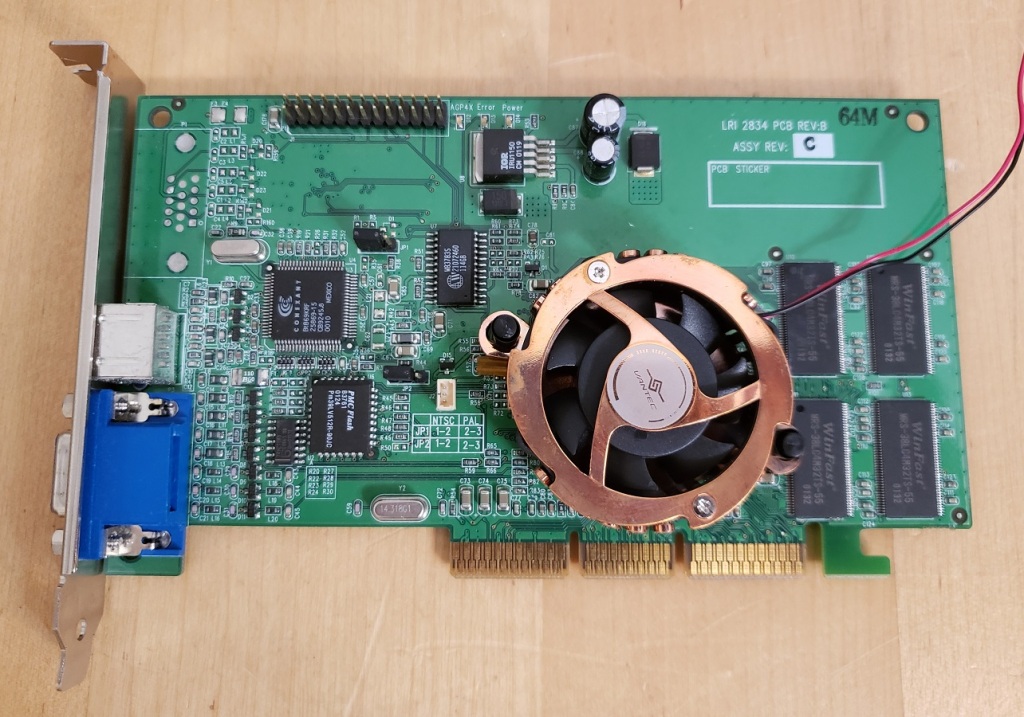
My initial choice for a video card was the Matrox G400 MAX which is a capable and IMO underrated card for gaming that also matched the workstation theme I was going with for this build. Unfortunately, even though its performance was good I wanted something a little more powerful and switched to a Geforce ti4600 though I found much of the power of that card wasted on the AGP x2 slot and weaker processors. I finally decided to try out the Geforce MX 400 which is roughly equivalent to the Geforce 256 in power and gave me framerates well below the Geforce ti4600 in some cases and noticeably better than the G400 MAX. This card just kind of “felt right” for me and what I was looking for from this build but your choice may differ.

I don’t know if I’ll keep this video card but I may try out the Geforce 2 Ultra or the PowerVR Kyro II in the future for this PC.
The Abit BP6 was in many ways ahead of its time as an affordable consumer level board. The main problem I have with the board is that it came out at a time when SMP processing was a niche area reserved for specific work tasks. The problem was that no mainstream OS supported the dual CPU configuration and while most users at the time were running Windows 95 or 98 only Windows NT, Linux and a few other less popular operating systems supported more than one CPU. When Windows 2000 and then XP were released this largely solved this problem as Windows XP quickly became a popular OS for home PCs and it supported dual CPUs. The other problem was software, specifically games. There was not a lot of dual CPU support written for games pre 2000 and even for a time after. Quake III is perhaps the best example of a game supporting dual CPUs but even though it did receive a noticeable FPS boost in dual CPU mode the mode could be glitchy on some setups. There were other games such as Falcon 4.0 but other than a few titles here and there users of the BP6 were stuck in single CPU mode. By the time dual CPU support and things like multi-core support were becoming more widely supported the Mendocino Celerons, even at 533 or 600MHz were woefully underpowered or lacked the code to run these games. Quake 4 from 2005 is another relatively early example of a dual CPU supporting game but the Mendocino CPU is incapable of running it at all due to lacking SSE code in the CPU.
In short the BP6 is a nice motherboard, even in single CPU mode. It was a pioneer in the consumer market but unfortunately, the whole gimmick of the dual CPU support was largely lost on the lack of software, specifically games, that supported it. In this sense as a gaming motherboard I couldn’t recommend the BP6 as there are better single CPU options available for early 2000s retro PC gaming that are more powerful and easier to find. As a cheaper workstation build of the time the board performs well and if your a collector of vintage hardware it’s a fun board to have and play around with.



